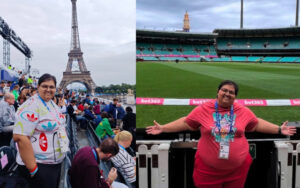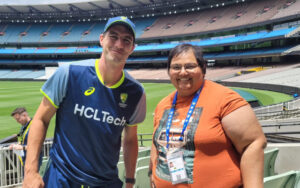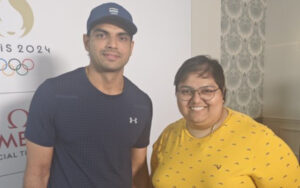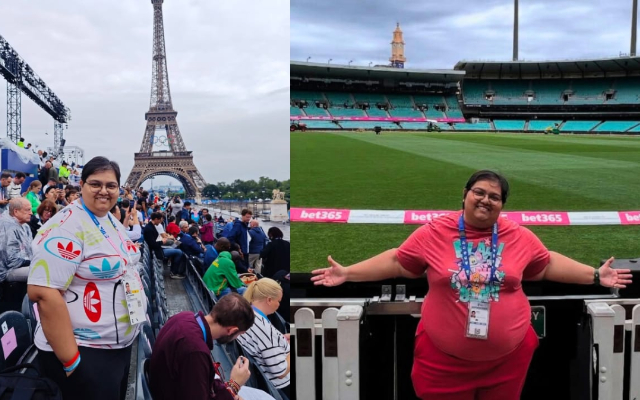
Standing amidst the electric atmosphere of the Paris Olympics 2024 and then transitioning to the measured intensity of the Border-Gavaskar Trophy 2024-25 in Melbourne and Sydney felt like stepping into two completely different worlds. Both are pinnacles of sporting excellence, but the challenges they present to a journalist are vastly contrasting. From the logistics to the emotional stakes, every detail painted a picture of why these experiences are both exhilarating and uniquely demanding.
The Olympics: A Frenetic Symphony
Covering the Olympics is like diving into a kaleidoscope of sports, stories, and emotions. Imagine this: one minute, you’re at the archery venue witnessing a perfect bullseye; the next, you’re rushing to the badminton court where India’s medal hopes hinge on a single point. Events run simultaneously across sprawling venues—archery, badminton, hockey, athletics—all demanding your attention.
There’s no time to breathe, rest, or recharge. Every moment could hold a story of triumph or heartbreak, and missing one could mean letting down an athlete’s narrative that deserves to be told. In Paris, I found myself darting between the archery venue, where India’s ace archers fought fiercely for glory, and the boxing ring, where Nikhat Zareen bowed out after a gruelling first-round match.
Nikhat broke down in front of the media, devastated that her four years of relentless hard work ended in one swift blow. There was no immediate redemption for her—no next series in five months to reclaim lost ground. This was the Olympics, a once-in-four-years stage, where stakes are larger than life, and emotions often overflow.
The mixed zone at the Olympics is where these raw moments unfold. Athletes walk through, battling exhaustion and emotions, offering insights into their triumphs and defeats. It’s a space where one question can either honour their journey or reveal the disconnect between the journalist and the sport.
For the Latest Sports News: Click Here

Cricket: A Rhythmic Dance
In contrast, covering cricket—especially Test cricket—offers structure and rhythm. Five days at the same venue, with press conferences, practice sessions, and match-day routines following a familiar cadence. The first session, lunch, tea, and post-day shows create a predictable rhythm for a journalist to fall into.
The emotional stakes in cricket are undoubtedly high, but there’s often a safety net. Take Virat Kohli’s struggles in the Border-Gavaskar Trophy. His form didn’t meet his towering standards, but he knows redemption lies in the England series just a few months away. The despair of a single performance doesn’t carry the finality it does in the Olympics.
What makes cricket coverage intriguing is the technical depth. Journalists here are often well-informed, discussing field placements, bowling strategies, or batting techniques. Questions during press conferences are pointed and thoughtful, rarely veering into the absurd.
The Knowledge Gap
One stark difference between the two events is the knowledge level of the media. Cricket journalists are immersed in the sport year-round, making them adept at asking nuanced questions. In Olympic sports, however, where visibility peaks only once every four years, the lack of depth is glaring.
For instance, when PV Sindhu lost to He Bingjiao in Paris, failing to secure a medal for the first time in her Olympic career, the first question she faced in the mixed zone was, “So Sindhu, you lost here, but surely you’ll win gold in LA?” The insensitivity and ignorance of the question were shocking, especially for an athlete grappling with the weight of her loss.
Similarly, Manika Batra, who made history by reaching the women’s singles pre-quarterfinals in table tennis, was asked after the team’s quarterfinal exit against Germany, “So will you stop playing singles and focus only on team events now?” Manika looked at me, smiled faintly, and shook her head, unsure how to respond to such misplaced speculation.

Storytelling: Breadth vs. Depth
The storytelling approaches also differ greatly. The Olympics demand breadth—you weave together the journeys, sacrifices, and triumphs of athletes across diverse disciplines, ultimately culminating in the results. In cricket, the player journeys are often well-documented, leaving the focus squarely on match results, performances, and strategies.
At the Olympics, you dive into the human stories—the boxer fighting societal odds, the sprinter coming back from injury, the archer breaking mental barriers. In cricket, you dissect technical brilliance—how a bowler exploited conditions or how a batter adapted to a challenging pitch.
A Shared Pride
Yet, amidst all these differences, one commonality binds the experiences: the pride of representing your nation in your own way. When the Indian flag rises at the Olympics, and the national anthem plays, goosebumps are inevitable. Similarly, before the start of a Test match, as the players line up for the anthem, the emotion is just as raw and overwhelming.
As journalists, we may not compete on the field, but we carry the responsibility of telling stories with honesty and integrity. Whether it’s capturing the heartbreak of Nikhat Zareen or analysing the grit of Virat Kohli, the commitment to doing justice to these moments remains the same.
Covering the Olympics and cricket are worlds apart, but both are equally rewarding. They remind us why sports transcend boundaries, and as journalists, why we are privileged to tell these stories.
Also Read: Harsha Bhogle remains one of a kind




